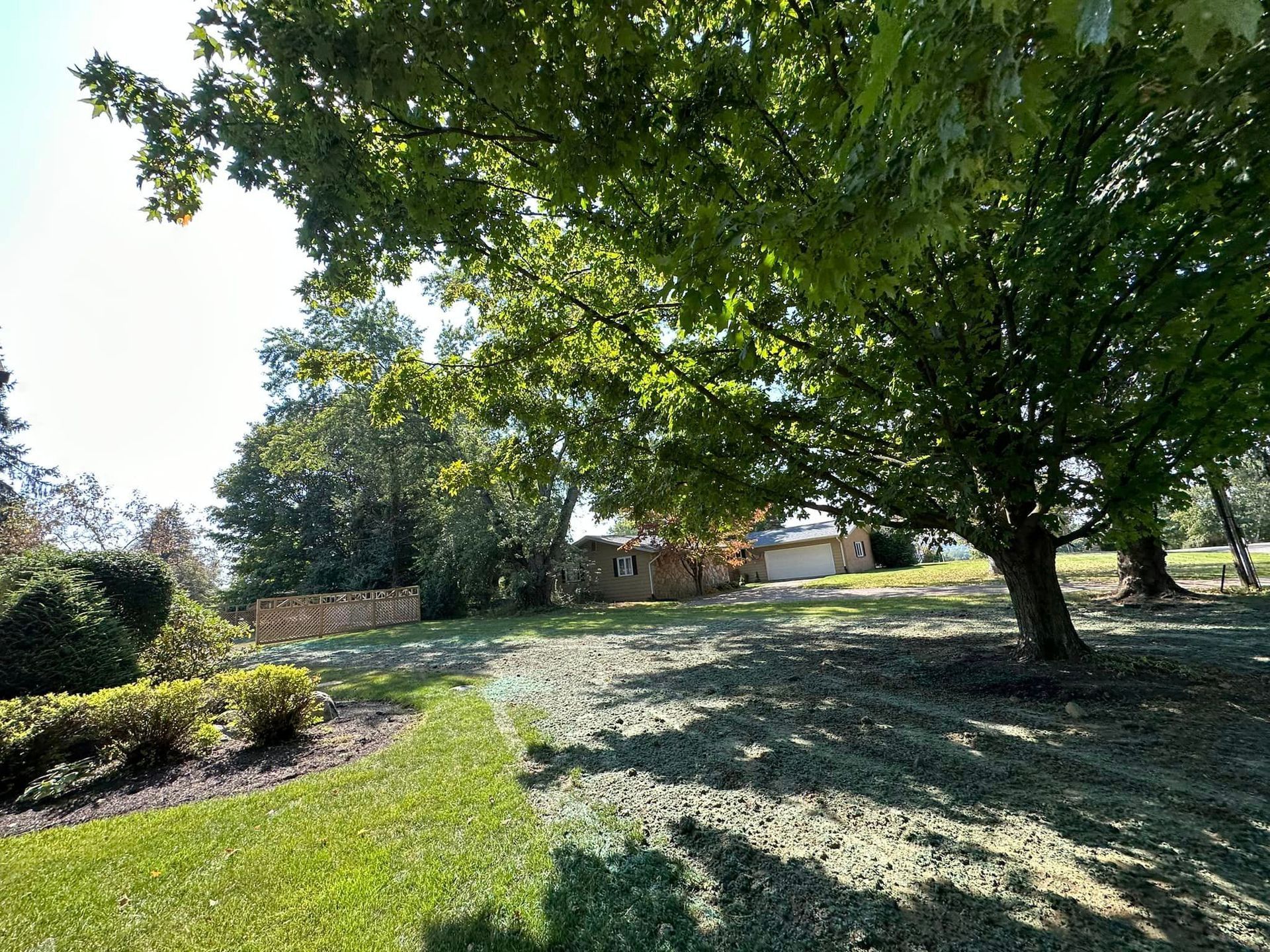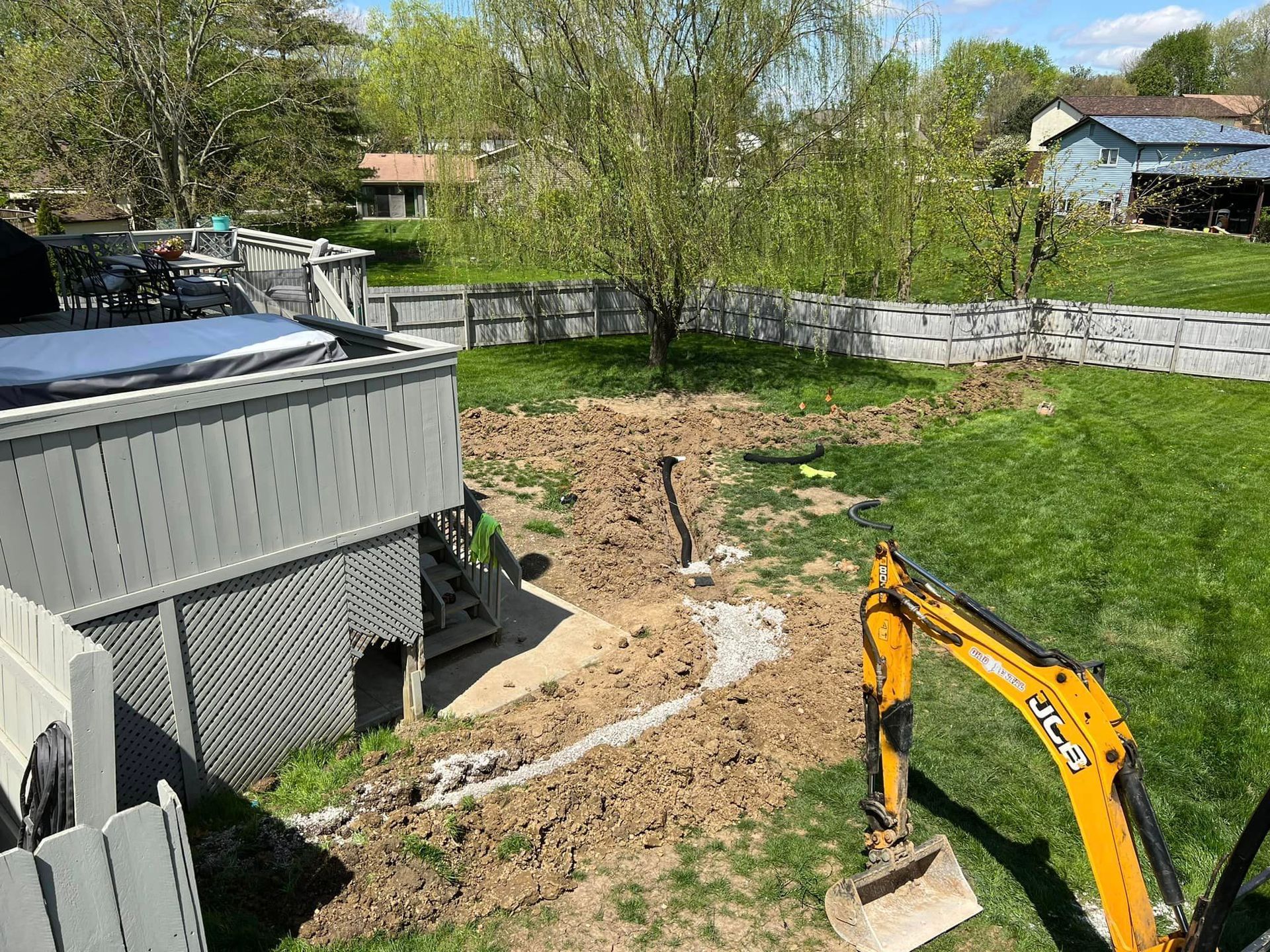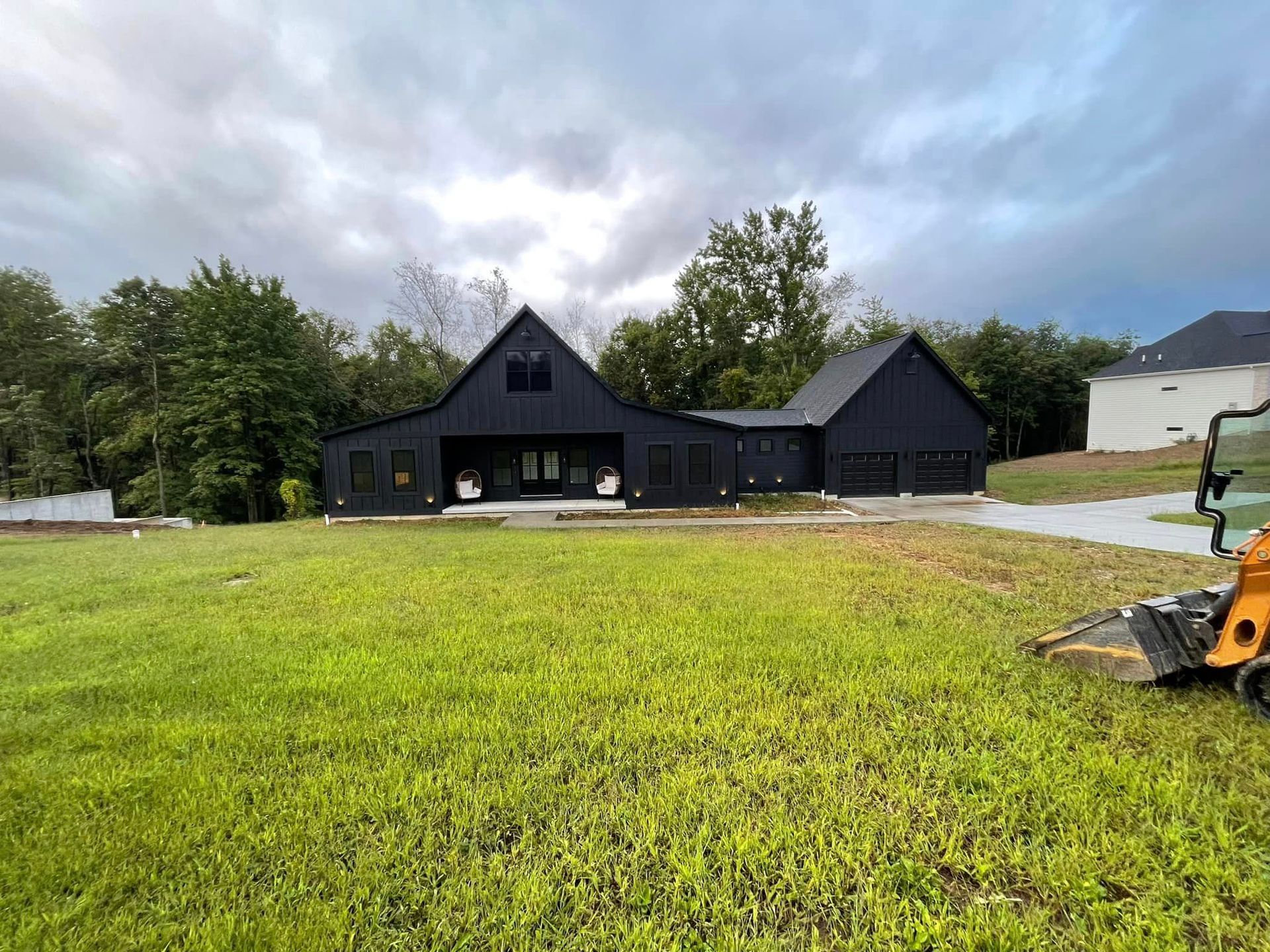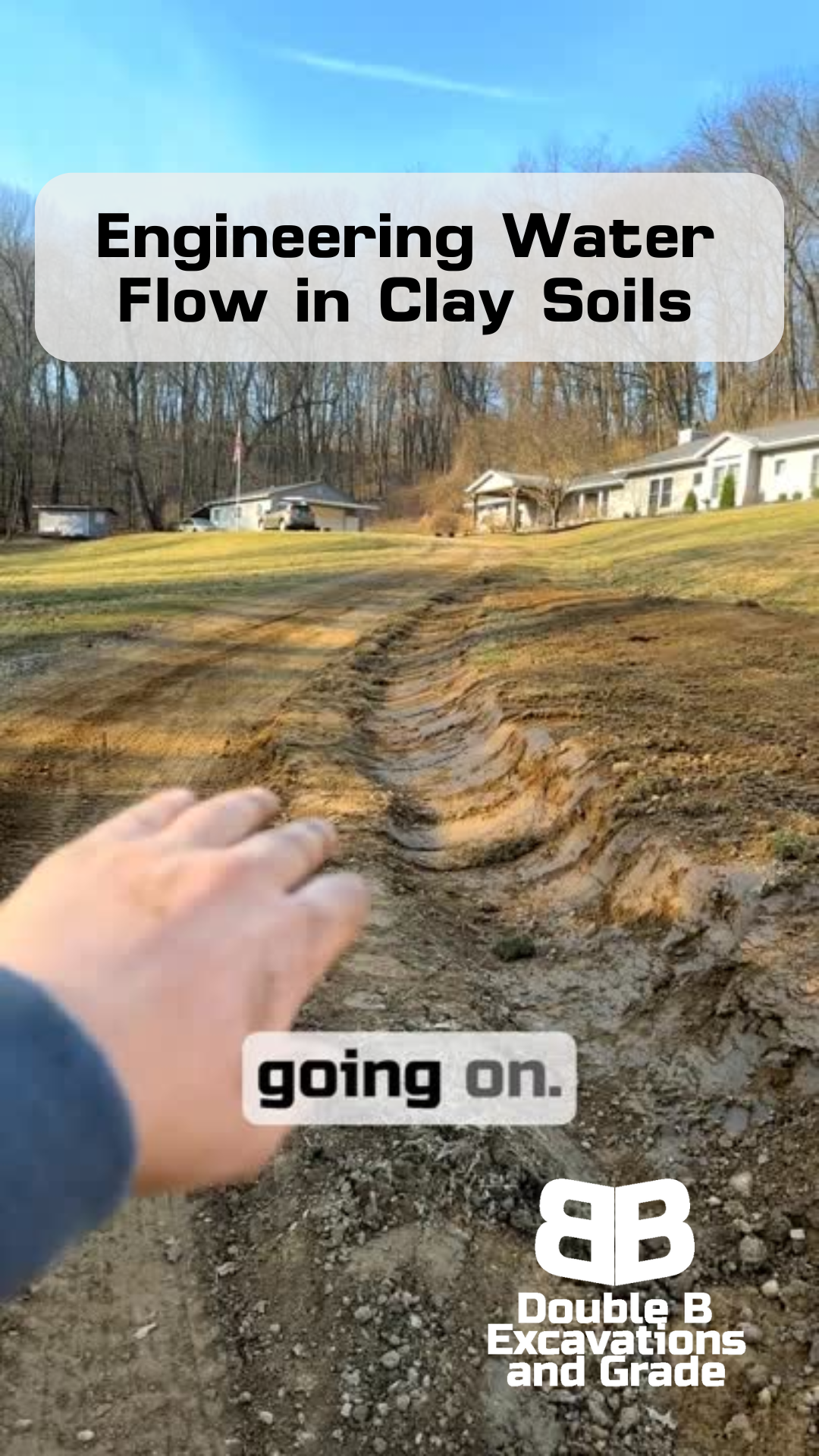Address
6752 Blacksnake Road Utica, OH 43080, United States
Get in touch
Give Us A Call (380) 205-0115
The 7-Year Driveway: What Time Teaches Us About Proper Base Compaction
Double B Excavations & Grade LLC
Grateful to Have Time to Work at Home
WORKING FROM HOME doesn't mean the same thing for contractors
You know what they say about contractors always having projects at home that never get done?
Well, they're not wrong.
My own driveway has been teaching me a valuable lesson in patience for about seven or eight years now.
But here's the thing - sometimes waiting isn't such a bad thing, especially when it comes to driveways.
As someone who builds and repairs driveways for a living, you might think I'd be embarrassed about waiting this long to add fresh stone to my own.
Truth is, this "neglect" has actually proven something I've been telling customers for years: when you start with the right base, time can be your friend.
Welcome to Double B!
The Driveway Specs
Let me paint you a picture of what we're working with here. This isn't your typical straight shot to the garage - it's a long driveway that winds its way up and over before reaching the road below. There are plenty of grade changes along the way, which usually means more maintenance headaches. At least, that's what most people would expect.
The original installation was done right - proper base material, good drainage consideration, and careful attention to those grade changes. Sure, there are some potholes here and there now, and certain spots could use attention. But after seven-plus years of daily use, winter freezes, spring thaws, and every kind of weather Ohio can throw at it, the foundation is still solid as a rock.
That's what makes this such a perfect real-world example. You can read all the technical specs you want about base material and compaction, but nothing beats seeing how something actually performs over time. My driveway has basically been a seven-year experiment in what happens when you focus on getting the foundation right from the start.
What Time Reveals
Here's something interesting I've learned watching this driveway over the years: time and traffic can actually work in your favor.
Every vehicle that's driven up and down this path, every season that's passed, has helped pack that base material down tighter and tighter.
It's like nature's compaction service, working 24/7 for free.
Think about it - when you first put down gravel or stone, there's always some settling that needs to happen.
Most folks get worried when they see dips forming in the first few months.
But if your base is right, what you're actually seeing is everything finding its proper place.
After seven years, my driveway's base is about as settled and stable as it can get.
Those stones aren't going anywhere.
Understanding Base Compaction
Now, I know what some people might be thinking: "Shouldn't a driveway look perfect all the time?"
Well, that's like judging a book by its cover.
What's happening underneath matters way more than what you see on top.
Here's the real deal about driveways - they're kind of like icebergs.
The part you see is just a small piece of what's really going on.
When we build a driveway, we're more concerned about what's happening below the surface.
That base layer needs to:
- Handle water drainage
- Support heavy vehicles
- Stand up to freezing and thawing
- Keep everything stable
You can throw fresh stone on top of a bad base all day long, but it won't fix the real problems.
That's why I tell my customers: don't panic about every little dip or pothole.
Sometimes what looks like neglect is actually your driveway doing exactly what it should - settling into a stronger foundation.
Maintenance vs. Major Repairs
Here's the million-dollar question: how do you know when your driveway needs real attention versus just a little TLC?
In my case, I knew it was time for some fresh stone because I was seeing some surface issues - a few potholes here and there.
But here's the key: these were just surface problems, not deep structural issues.
Think of it like maintaining a car.
Sometimes you need a complete engine overhaul, but most times, just changing the oil keeps everything running smooth.
With driveways, a fresh layer of stone is often all you need if the base is solid.
It's when you see major shifting, drainage problems, or spots that never seem to stay fixed - that's when you know you've got bigger issues to deal with.
Practical Takeaways
So what can you learn from my seven-year "experiment"?
A few key things:
First, if your driveway was installed right in the first place, don't rush to fix every little imperfection.
Sometimes giving it time to settle properly is the best thing you can do.
Second, know the difference between surface issues and real problems.
A few potholes in an otherwise stable driveway usually just means it's time for some fresh stone on top.
But if you're seeing the same problems come back over and over, especially after repairs, that's when you might need to look deeper.
Finally, remember that maintenance doesn't always mean major overhaul.
In my case, waiting these seven years wasn't laziness - it was letting time and traffic do their work to create an incredibly stable base.
Now, adding some fresh stone on top is all we need to get this driveway looking and working like new again.
Wrapping it Up
Want to know if your driveway needs attention?
Take a good look at how it handles water during heavy rain, how it holds up during freeze-thaw cycles, and whether problems keep coming back in the same spots.
These signs tell you a lot more than just surface appearance.
After all, a good driveway is like a good contractor - it's not about looking flashy, it's about doing the job right and standing the test of time.
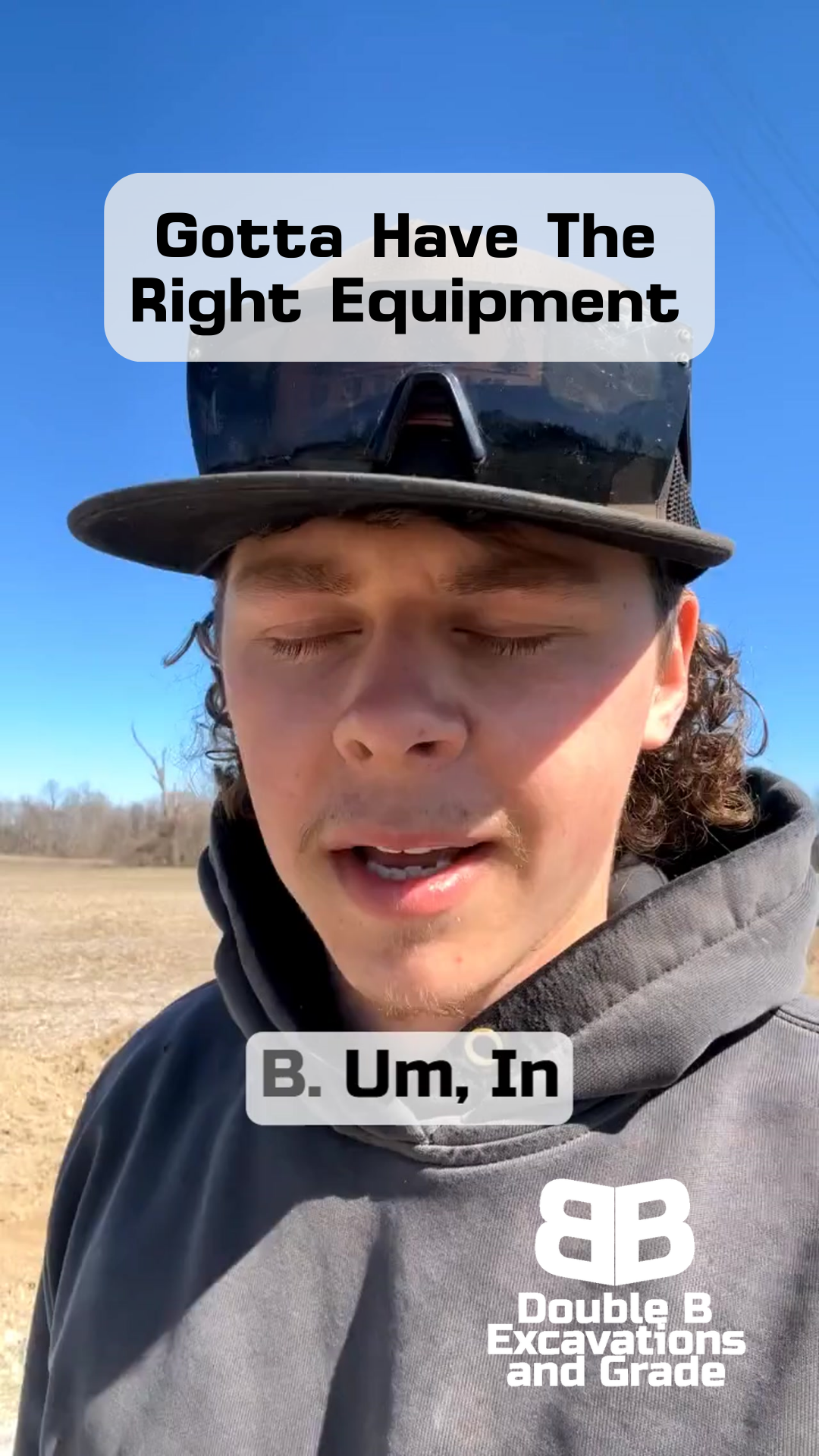
Services
Double B Excavations & Grade LLC


